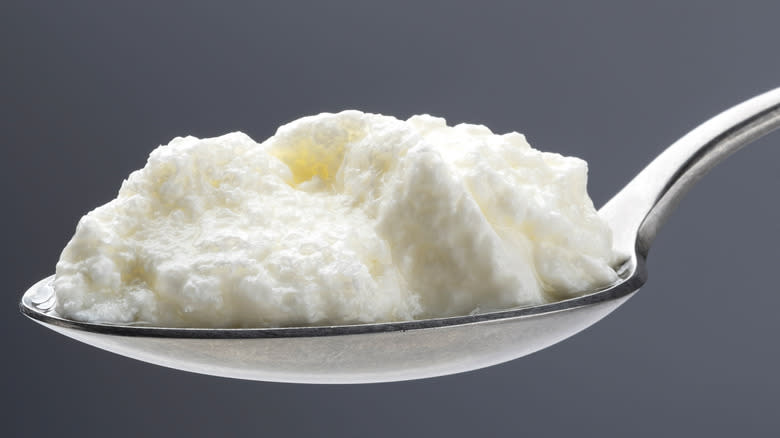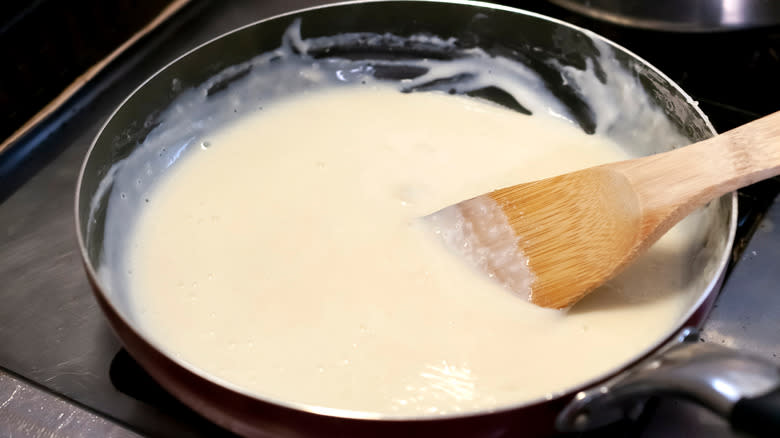Is It Safe To Eat Cream That Has Curdled?

If there's one thing that the coziest dishes have in common, it's a healthy dose of cream. Whipping cream gives pastas, soups, casseroles, and more a richer, smoother texture. Yet, somewhere in the cooking process, it's not uncommon for the cream to curdle. While it certainly doesn't look appetizing, is curdled cream still safe to eat?
We've all been there: One minute, your cream is bubbling away and then you turn your head for one second, whipping back around to find that the once smooth sauce has developed strange, ricotta-like lumps. This can also occur at other seemingly mundane times, like right after salting the sauce or adding a splash of vinegar or lemon juice for tang. Although they're necessary for a good sauce, all of these culprits are likely what's leading to curdling.
Whether you've added too much acid or turned the temperature too high, the proteins within the cream have decided to separate from the sauce and cling together, forming the clumps you see in the sauce. Despite how they look, a curdled cream sauce is completely edible, so you won't get sick from eating it. While that is an upside, the smooth texture of cream is integral to certain recipes, so consuming it can be a strange experience of trying to force down food that's simultaneously watery and lumpy. Plus, the sauce may take on a sour tinge, which could throw off the entire dish.
Read more: 26 Types Of Pasta Sauce Explained
Can A Curdled Cream Sauce Be Fixed?

Turning to your cream sauce halfway through cooking and realizing that it's begun curdling may make you want to throw it out and start again. As much as we'd love to tell you not to do that, it may be the best option. Once cream has started to curdle, reversing it is extremely difficult. With clumps that aren't too large, straining the sauce may work, but it's not guaranteed.
If excessive heat is the reason for the curdling, try removing it from the stove and placing it in an ice bath. This should stop the cooking process in its tracks; but again, it may not work. More than anything, preventing a broken or curdled sauce is the best option. Wait until the last minute of cooking to add a squeeze of lemon juice to avoid curdling. The same goes with salt — only add the mineral to the sauce in the last few minutes of cooking.
Temperature-wise, your cream sauce should never go up to a boil. Keep it at a lower temperature and stir frequently to prevent the bubbles from rising up. The same goes for when you're baking something with cream. The way to avoid curdling in casseroles like scalloped potatoes is to bake them at a low temperature, such as 350 degrees Fahrenheit. When choosing the type of cream to use, opt for heavy whipping cream, as the higher fat content will lower its chances of curdling.
Read the original article on Tasting Table.

 Yahoo Sports
Yahoo Sports 
